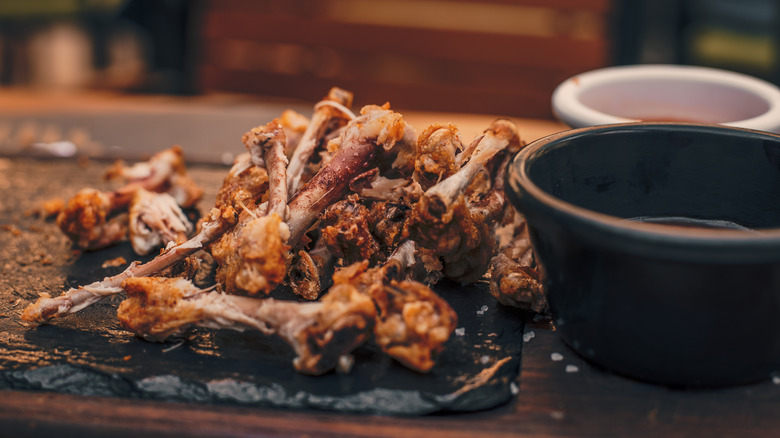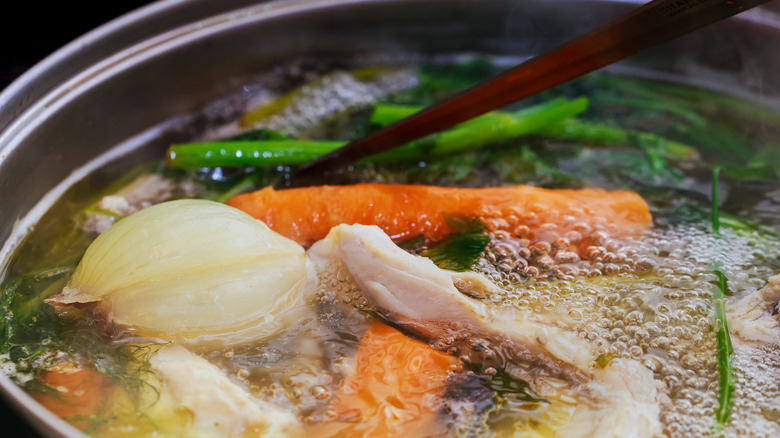Why You Should Stop Throwing Out Chicken Bones
You probably heard stories in history class about hunter-gatherer societies using all of the animal whenever they made a kill, an admirable way to reduce waste and respect the sacrifice of a life, but this practice is not bound to the past by any means. Beginning in the 2010s, whole animal butchery saw a swift rise in popularity (via KQED). More and more butchers across the United States began sourcing whole animals and butchering them in-house instead of outsourcing pre-packaged cuts, a previously common practice. According to the Butchers' Guild, whose motto is "no ounce wasted," whole butchery ensures fresher food and limits waste to support more sustainable agriculture. However, the bones of the animal are still often wasted.
If you've ever brought home a rotisserie bird or made a whole roast chicken yourself, you've likely tossed the discarded bones, which is a shame because you're missing the chance to make some utterly awesome chicken stock. Before we go any further, let's establish the difference between stock and broth, which is a continuous source of confusion for many. According to the New York Times, broth is made with mostly chicken meat, and only a few bones, whereas stock has a very high ratio of bones to meat. Stock is also called bone broth, but if you think this is anything like the salty, watery chicken stock that comes in a can, you're mistaken.
Use leftover bones to make chicken stock
Making chicken stock is easier than you might think — and the end result is far richer in flavor and texture than any store-bought broth. All you really need to do is dump bones, vegetables, and water in a pot and let them simmer away, so the majority of the cooking process is inactive. As Bon Appétit explains, the slow cooking process causes the cartilage in the bones and connective tissue to break down and infuse the stock. The bones, cartilage, and connective tissue are all rich in collagen, the most abundant protein in the body, per the Harvard School of Public Health. Thanks to its role in strengthening skin, hair, and nails, collagen has become a popular supplement, but it plays an extra special role in stocks.
As the Harvard School of Public Health explains, boiling bones causes the collagen to break down into gelatin. The infusion of gelatin lends an especially rich, smooth texture to the stock, which you can enhance by using bones with lots of joints and connective tissue, such as chicken feet. However, Bon Appétit cautions that bones alone do not carry much flavor, so it is essential to use bones with plenty of meat and cartilage attached. Better yet, use a whole chicken carcass for the most flavor and texture.

